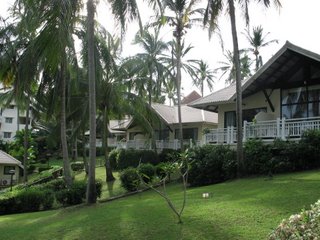We received 126mm over two days.
Our creek was running a banker and the dams started filling.
So it was a rush to get the Cabernet Sauvignon sprayed before more forecasted rain over the next weeks came (and it did on a regular basis).
We were lucky enough to get a warm sunny dry day in between the showery ones to get this task completed.
Mid March we had a sudden scorching day with temperatures hitting 38C, (causing devastating bushfires just to the south of us) then it turned cool with a week of substantial rain.
This weather pattern is so typical of February\March (see graph) in the Shoalhaven and is the bane of the grape growers here who have late maturing varieties eg. Cabernet Sauvignon.
 |
| Average Monthly Rainfall/Rain Days Ulladulla AWS |
While the vine foliage can be protected from fungus by well timed spraying, too much rain dilutes the juice in the nearly ripe fruit. Lower sugar equals lower alcohol!
Worse, it can cause the berries to split which alters the flavour profile of the grape. Resultant decomposition can produce compounds like ethyl acetate and acetic acid which are undesirable for wine making.
Splitting also provides a breeding ground for fungus, particularly botrytis, which can spread rapidly.
This all happened last year.
We ended up dumping the wine made.
There is a very detailed article on grape splitting from CSU here.
 But this year we wanted to avoid any problems and picked the crop on 24th March.
But this year we wanted to avoid any problems and picked the crop on 24th March.It was probably a little early going by the Baume reading.
The fruit was in reasonable condition but with some botrytis evident and we didn't want it spreading.
We ended up with a yield about two thirds normal due to the kangaroo "attack" early in the season.
Baume: 12.0° (a little bit low)
pH: 3.5 (good)
Grapes were crushed and destemmed and an excess yeast culture and DAP added to the must.
After fermentation is finished, we will transfer the wine plus skins to a stainless steel tank which will be sealed to allow more colour to be extracted and for MLF to take place.
After a week of maceration, it will be pressed and the wine returned to the tank, pH adjusted and sulphured.
The pomace will be returned to the vineyard rows.
 |
| Pomace left after pressing |
After racking the wine off the fermentation lees it will be returned to the tank where egg white is added to start the clarification process.
 |
| Racking |
Then, after another racking off the settled solids, French oak chips will be immersed in the wine to give it the desired amount of oakiness. This mimics, to some extent, maturation in an oak cask but is really no substitute for the real thing. But with the cost of barrels and their restricted size plus relatively limited life span, it is ok for this Vin de Garage operation whose wines are meant for early consumption.
French oak 225L barriques are around $1000 and up, Hungarian oak $700 and up, American oak $500 and up.
Oak is used in wine making to vary the colour, flavour, tannin profile and texture of wine




















1 comment:
You forgot to mention that you had TOP NOTCH assistance this year. xo
Post a Comment